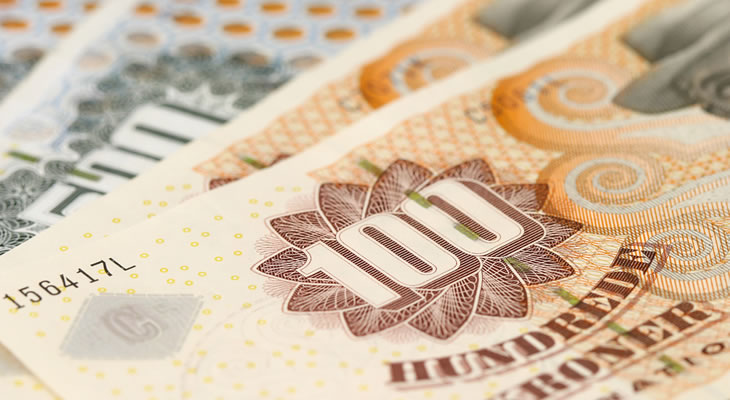The Pound Danish Krone exchange rate’s movement this week has been largely down to Pound weakness. Brexit jitters, low UK inflation figures and fading Bank of England (BoE) tightening expectations have seen GBP DKK fall from around 8.53 to around 8.40 so far this week.
Pound (GBP) Investors Await Retail Sales Data
After its big plummet near the beginning of the week, the Pound saw largely flat trade on Wednesday. Sterling investors will be waiting for Britain’s June retail sales results, due Thursday, before making any more big movements on the currency.
The Pound outlook dropped considerably following the publication of Britain’s June inflation report earlier in the week, as traders expect inflation is not high enough to keep any pressure on the Bank of England (BoE).
UK inflation was forecast to remain at 2.9% year-on-year, but it instead dropped to 2.6%. The month-on-month inflation score came in with a stagnant 0%.
With inflation lower than expected and Britain’s economic outlook murky due to Brexit uncertainties and a consumer pay squeeze, the BoE has plenty of reasons to defend keeping monetary policy at its loosest levels on record.
As a result, investors are highly anticipating Britain’s June retail sales to indicate how Britain’s pay squeeze is impacting the economic outlook.
If retail sales fall short of expectations, it will indicate that consumer habits have been more negatively affected by the pay squeeze than expected. The Pound would likely end the week near its lows in this scenario.
However, stronger-than-expected retail sales would bolster hopes that UK consumers are resilient even amid the pay squeeze, which would help the Pound to recover from this week’s falls.
Danish Krone (DKK) Limp Ahead of European Central Bank Meeting
The Danish Krone, which is pegged to the Euro (EUR), has been unable to capitalise on this week’s Pound weakness due to European Central Bank (ECB) uncertainty.
Euro and Danish Krone traders are hesitant to continue buying the currencies until it becomes more evident that the ECB is planning to announce an end-date for its aggressive quantitative easing (QE) scheme.
With some analysts predicting the bank will use Thursday’s meeting as an opportunity to become more hawkish but others arguing the bank will maintain caution, the Danish Krone has seen limited performance.
This week’s Eurozone economic data hasn’t inspired movement in the Euro and Krone either. Eurozone inflation met expectations in June, while ZEW’s economic sentiment surveys from July fell short. May’s Eurozone construction output slowed from 3.3% to 2.6.
The Pound to Danish Krone exchange rate could see significant movement by the end of the week depending on the outcome of the ECB’s July policy decision. ECB President Mario Draghi could also inspire movement during his following press conference.
If the bank does indeed take a more hawkish stance and hint that it announce a date for policy adjustment later in the year, the Danish Krone will surge as investors buy up the Euro.
However, if the bank takes a more hawkish stance and indicates that QE could remain in place for some time, GBP DKK could recover towards the end of the week.
GBP DKK Interbank Rate
At the time of writing this article, the Pound Danish Krone exchange rate trended in the region of 8.40. The Danish Krone to Pound exchange rate traded at around 0.1190.


Comments are closed.